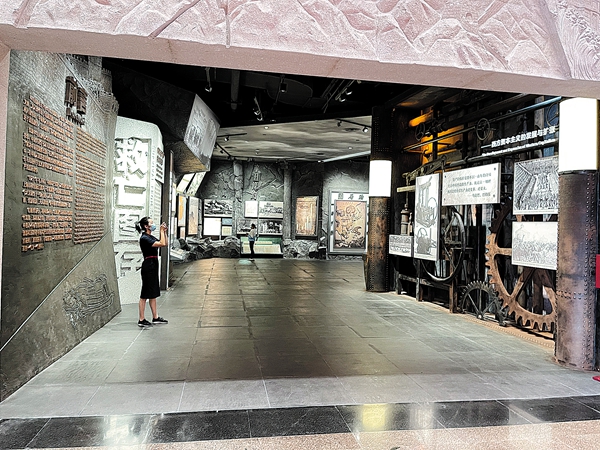Visitors flock to historic site
By Yang Feiyue | China Daily | Updated: 2021-07-06 08:03

The exterior wall is covered in large green tiles, which not only renders the whole building with a solemn atmosphere, but displays rich cultural elements, characteristic of regions south of the Yangtze River. The main building resembles a hammer and sickle, symbolizing the emblem of the Party. It is 19 meters high and has two stories.
The memorial welcomes more than 1 million visitors a year, according to Li.
A few minutes walk from the memorial hall, the Yanyu Tower and a small red boat are also frequented by visitors in the neighborhood.
The boat was built in 1959 and fashioned after the red boat on the Nanhu Lake, where that fateful first national congress of the CPC was concluded 100 years ago.
It was on the boat that the founding of the CPC was announced.
The replica was made based on the accounts of Wang Huiwu who helped arrange the transfer of the first national congress from Shanghai to Jiaxing and was reviewed and approved by Dong Biwu, one of the 13 delegates who traveled from all over the country to attend the meeting that began in Shanghai on July 23, 1921.
The weeklong meeting, however, was interrupted on the second to last day by the French police. At the suggestion of Wang Huiwu, the meeting was transferred to Jiaxing and completed on the red boat.
"We maintain the boat every year," Li says, adding that everything is done by hand in the traditional way.
The red boat is moored near the Yanyu Tower, which has retained its historical look.
It was where some of the delegates went to reconnoiter the area to ensure the safety of the meeting.
Red tourists at Jiaxing have been on the rise over the past six years, says Zhu Yawei, a senior government official at Jiaxing.
The city has received 2.26 million tourist visits over the first five months of this year, and the authority expects annual visit numbers to surpass 6 million.
The Nanhu Lake scenic spot greeted 357,400 tourists over the Labor Day holiday (May 1-5).
Among them, 65 percent were born between the 1980s and 2000s, according to Zhu.
"It shows that our red tourism offering appeals to more young people, who want to review the history of the Party and draw inspiration from it," Zhu says.
The rise of red tourism has also urged the local authority to step up efforts to upgrade the local tourism industry.
"We've done a lot of work in improving our services and enhancing the tourist experience," Zhu says.
Red culture has been integrated with local water town culture and historical elements.
The idea is to "let tourists to Jiaxing get a sense of the original aspiration and mission of the Communist Party of China", Zhu says.
























